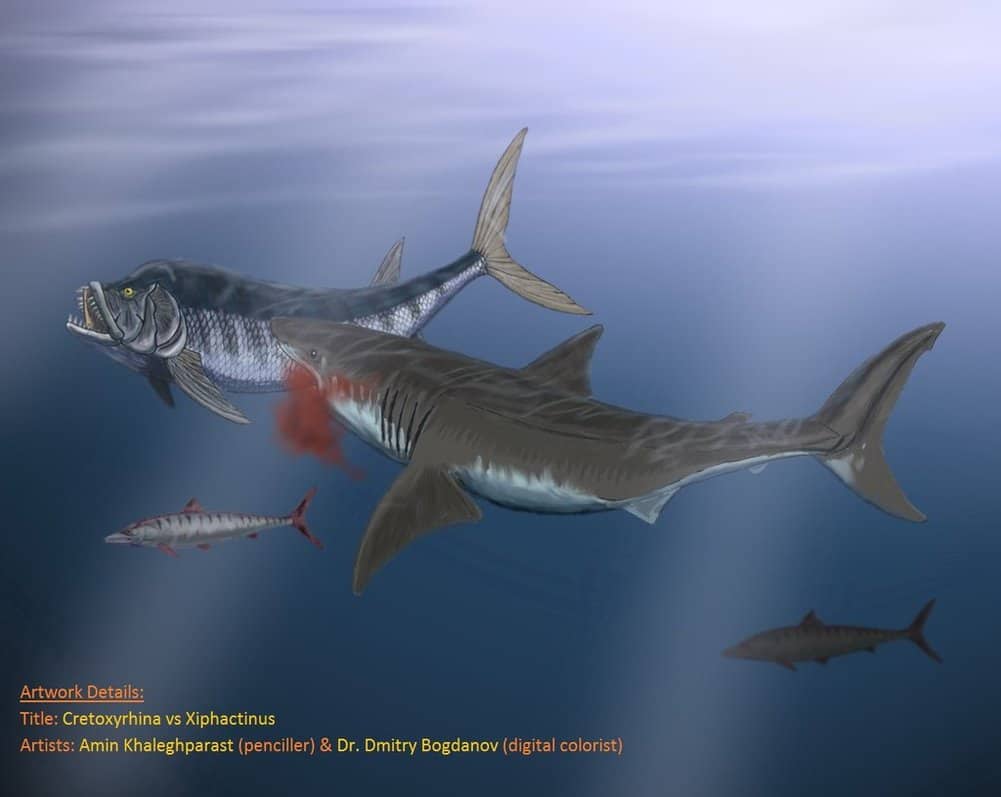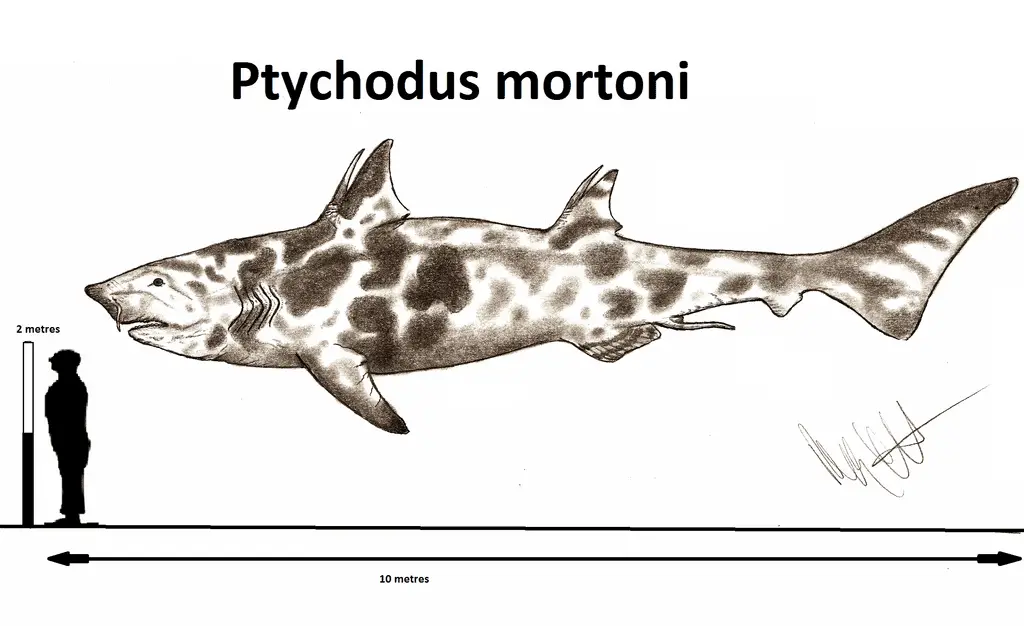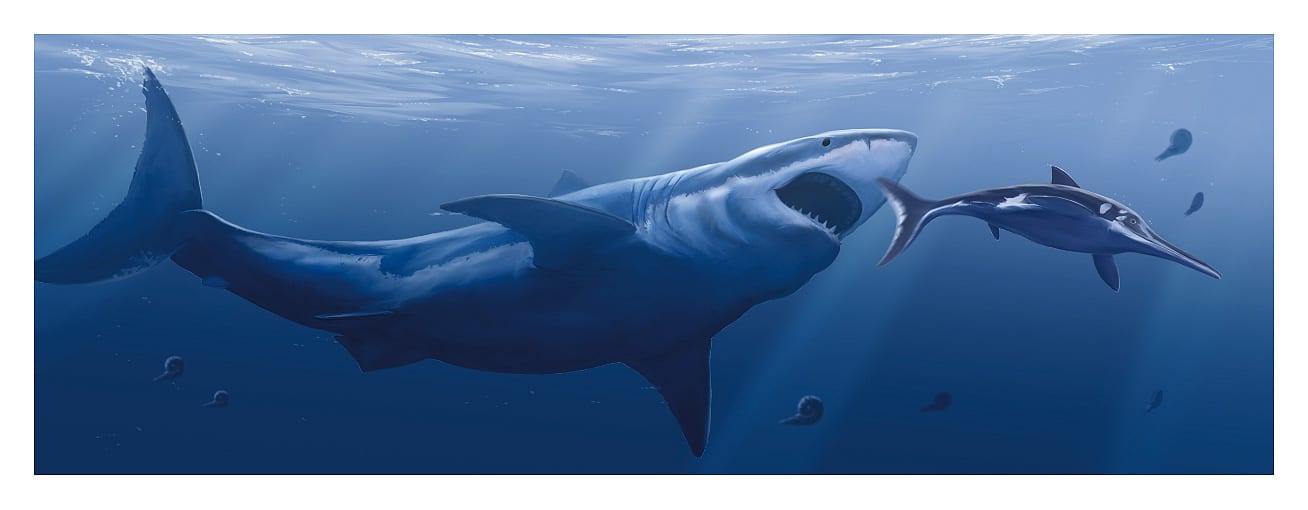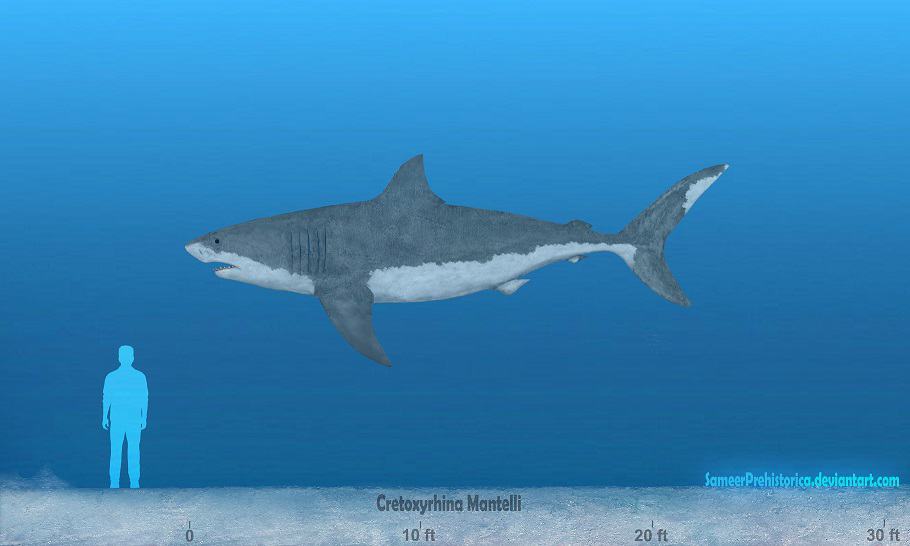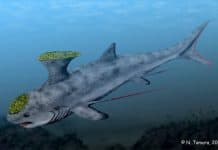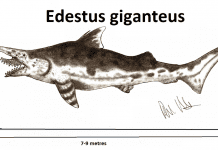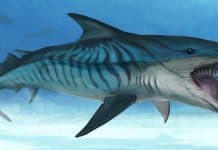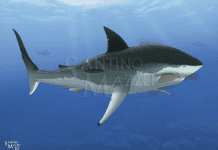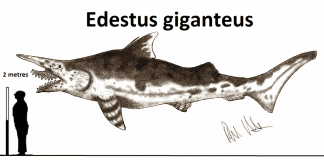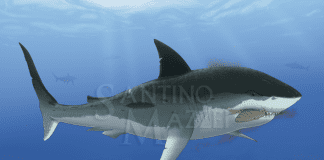Quick Cretoxyrhina Facts
- Lived during the Middle to Late Cretaceous Period
- Swam in oceans all over the world
- Ate fish and other marine animals
- Was longer than a great white shark
- Weighed as much as a great white shark
About Cretoxyrhina
Cretoxyrhina is a prehistoric shark which lived approximately 100 to 80 million years ago during the Middle to Late Cretaceous Period. It was first discovered during the 1840s by Swiss Naturalist Louis Agassiz. However, that wasn’t a complete fossil of this shark. A more complete one wouldn’t be found until the late 19th century when Charles H. Sternberg found a more complete fossil in Kansas. It was then given its name – a name which means “Cretaceous Jaws.”
All you have to do is look at Cretoxyrhina pictures and you can tell that these were some pretty ferocious sharks. They were about 25 feet long and weighed around 2000 pounds. However, its size isn’t all that makes it scary. Its teeth and jaws do a pretty good job of that all by themselves. It had hundreds of razor sharp teeth that have often been compared to those super sharp knives called Ginsu knives. Actually, one of the most interesting facts about Cretoxyrhina is that it has often been nicknamed the “Ginsu Shark!”
Some people might think it strange that the fossils for a large shark would be found in Kansas. After all, Kansas is nowhere near an ocean. However, there is a reason for that. This state, as well as the entire Midwest, was once covered in an ocean called the Western Interior Sea. That is why the Midwest has been such a rich source of marine organisms and why shark fossils such as Cretoxyrhina can be found there.
As you can imagine, this shark lived off fish and any other marine animals it came across. And it did it with stunning efficiency. Which is a pretty admirable feat considering it had to share the waters with some pretty mean dinosaurs. Such as the sea serpents called Plesiosaurs and the always deadly Mosasaurs. Those are some pretty tough dinosaurs to have to compete with and protect yourself from – yet Cretoxyrhina did it without a problem.
